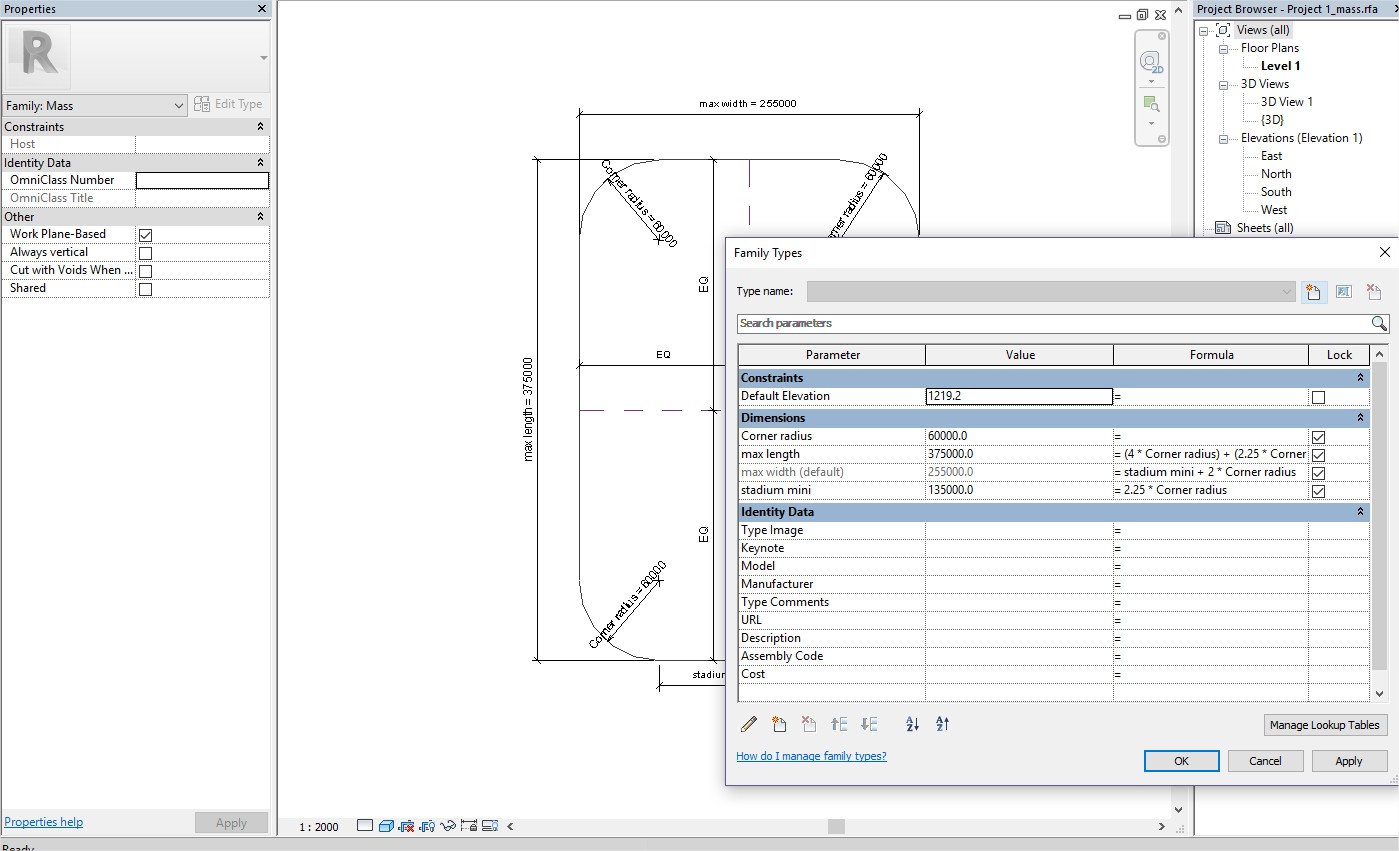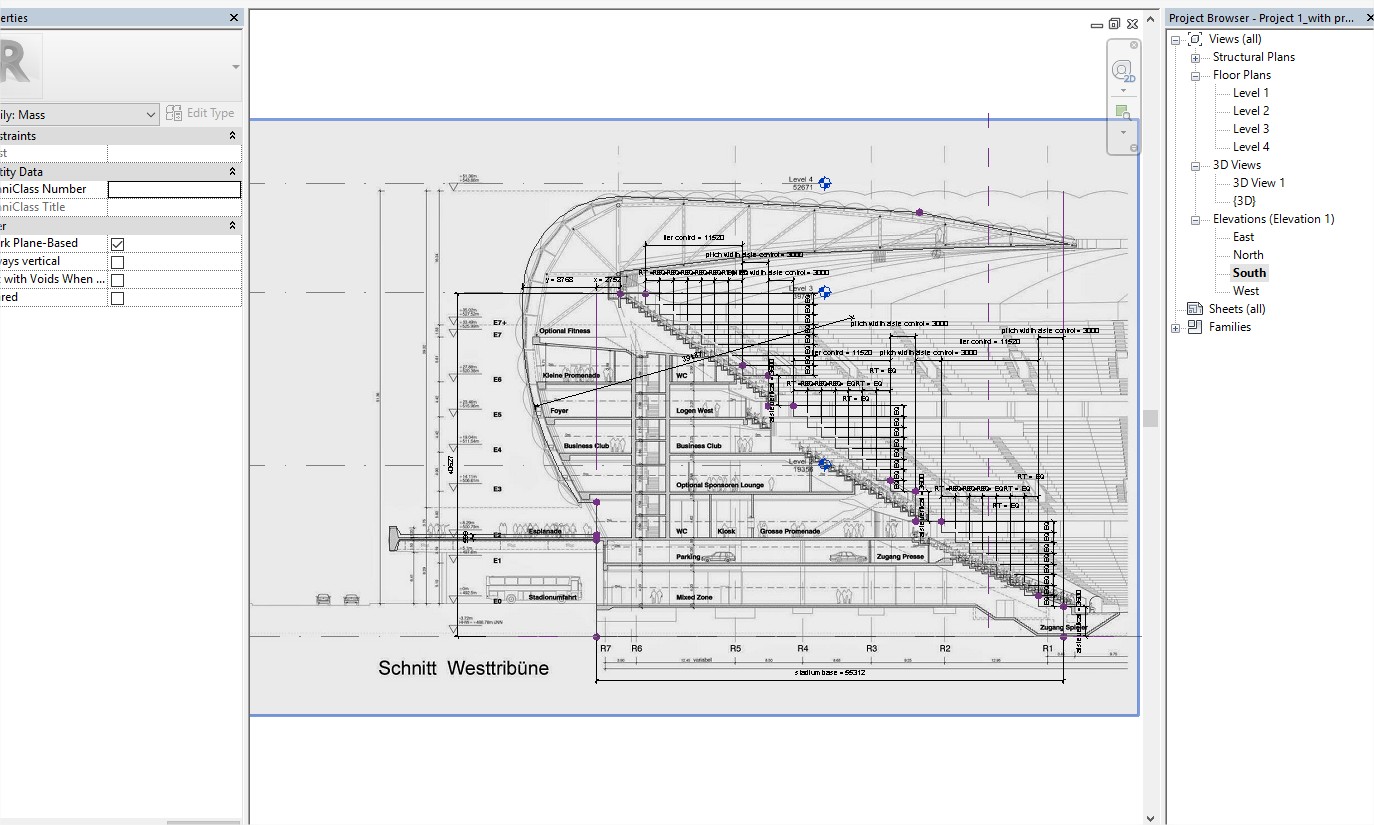
About the Project
This project features a parametric modelling process used to create a stadium design that can be adapted for different types of use and expected capacity. The process involved creating a horizontal spread, section profile, and parametric membrane curtain panel. The Revit family and curtain panel were applied to the swept profile, and the parameters were flexed to ensure they were working properly. Some limitations of Revit were encountered during the process.
Status
Completed
Tools Used
Revit, Dynamo
Process Detail -
First, I created a preliminary sketch of the stadium outline based on the approximate size. I determined a central point for the stadium outline with reference lines, and used the corner radius as the driving parameter to control the width and length of the stadium, which were set equidistant from the center.
Next, I traced out the outline of the stadium section by importing a jpeg image from the design drawings by the architects. I used each tier to represent a flight of rows separated by aisles, which became the driving parameter for adjusting the size of the stadium. I created three different types based on the use and expected capacity, and used the aisle parameter to control the stadium width and overall tier sizes.
I then loaded the Revit family (section profile) into the previous family controlling the horizontal spread of the stadium. Selecting the profile and the horizontal spread, I used the ‘Create form’ button to create the stadium sweep. I flexed and tested the types to ensure there were no conflicts.
After that, I created a new parametric Revit family to be applied to the outer shell of the section profile. The curtain panel was designed as a rhomboid with an adjustable height. I loaded the curtain panel into the family containing the swept profile, selected the faces of the family that would receive the curtain panels, and temporarily isolated them. I then mapped the rhomboid pattern to the isolated faces and applied the curtain panels to the face.
Finally, I flexed the parameters to ensure they were working properly and without errors. The horizontal spread family was also updated to show the pitch outlines and allow for space for track events depending on the type of pitch size selected.




